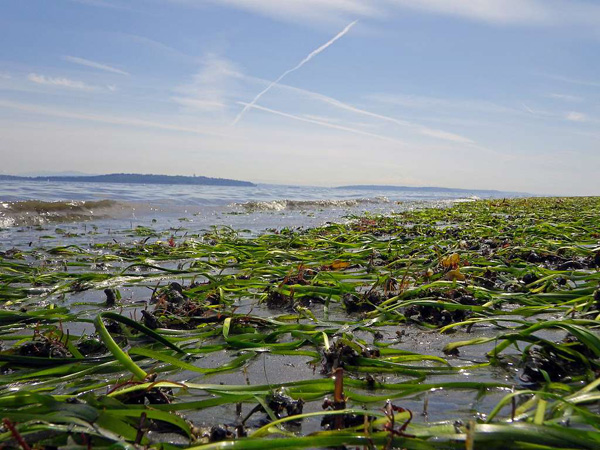Alarming decline of Eelgrass threatens Maine's coastal ecosystem

[An image of Bainbridge island eelgrass bed. Photo credit to Picryl]
Cheyenne Adams, a marine biologist leading the project of mapping eelgrass beds along Maine’s coast has made a startling discovery: the eelgrass beds are declining rapidly.
Ms. Adams and her team at the Maine Department of Environmental Protection are surveying the extent of eelgrass to assess the current situation and develop strategies to minimize future harm.
According to a survey published in March 2023, eelgrass in midcoast Maine has declined by about 60 percent since 2005.
This trend was further confirmed during Adam’s recent project.
During one survey, Adams and her teammates were unable to locate a bed of eelgrass in an area where it was previously abundant, which led to shock among the researchers.
"It is the nature of the work that we don't see grass at every transect," Adams commented.
While eelgrass is not visible from the water’s surface, its significance cannot be overstated.
This underwater plant plays a crucial role in maintaining coastal ecosystems.
Eelgrass supports biodiversity by providing habitat for multiple marine species.
Commercially important organisms such as herring, cod, and shellfish often nurture their offspring in these underwater meadows.
Eelgrass also helps prevent coastal erosion by stabilizing sediments and reducing wave energy.
It contributes to climate change mitigation by carrying carbon and producing oxygen.
The rapid decline of eelgrass along the Maine Coast could have severe consequences.
For instance, the region is renowned for its dynamic biodiversity and cultural importance.
A massive loss of eelgrass could disrupt the numerous marine organisms that depend on it, potentially affecting both the ecosystem and economic activities such as fishing and tourism.
Experts have identified climate change as the primary problem behind the reduction of eelgrass.
Rising temperatures stress the plants, while sea level rise reduces the amount of sunlight reaching them.
Changes in ocean water composition may also affect the eelgrass’s ability to adapt to changing conditions.
Ironically, the loss of eelgrass could accelerate climate change as dying plants release the carbon they have stored.
Adams emphasized that mapping eelgrass beds can play a crucial role in addressing this issue.
Beyond preserving ecosystems and slowing the pace of climate change, these efforts can raise public awareness, support preservation initiatives, and provide valuable data for future research.
As Adams continues her project to map eelgrass along the coast of Maine, there is hope that her work and similar initiatives will contribute to the protection and restoration of these vital underwater habitats.

- Jia Yoo / Grade 9
- Newton Academy

![THE HERALD STUDENT REPORTERS [US]](/assets/images/logo_student_us.png)
![THE HERALD STUDENT REPORTERS [Canada]](/assets/images/logo_student_ca.png)
